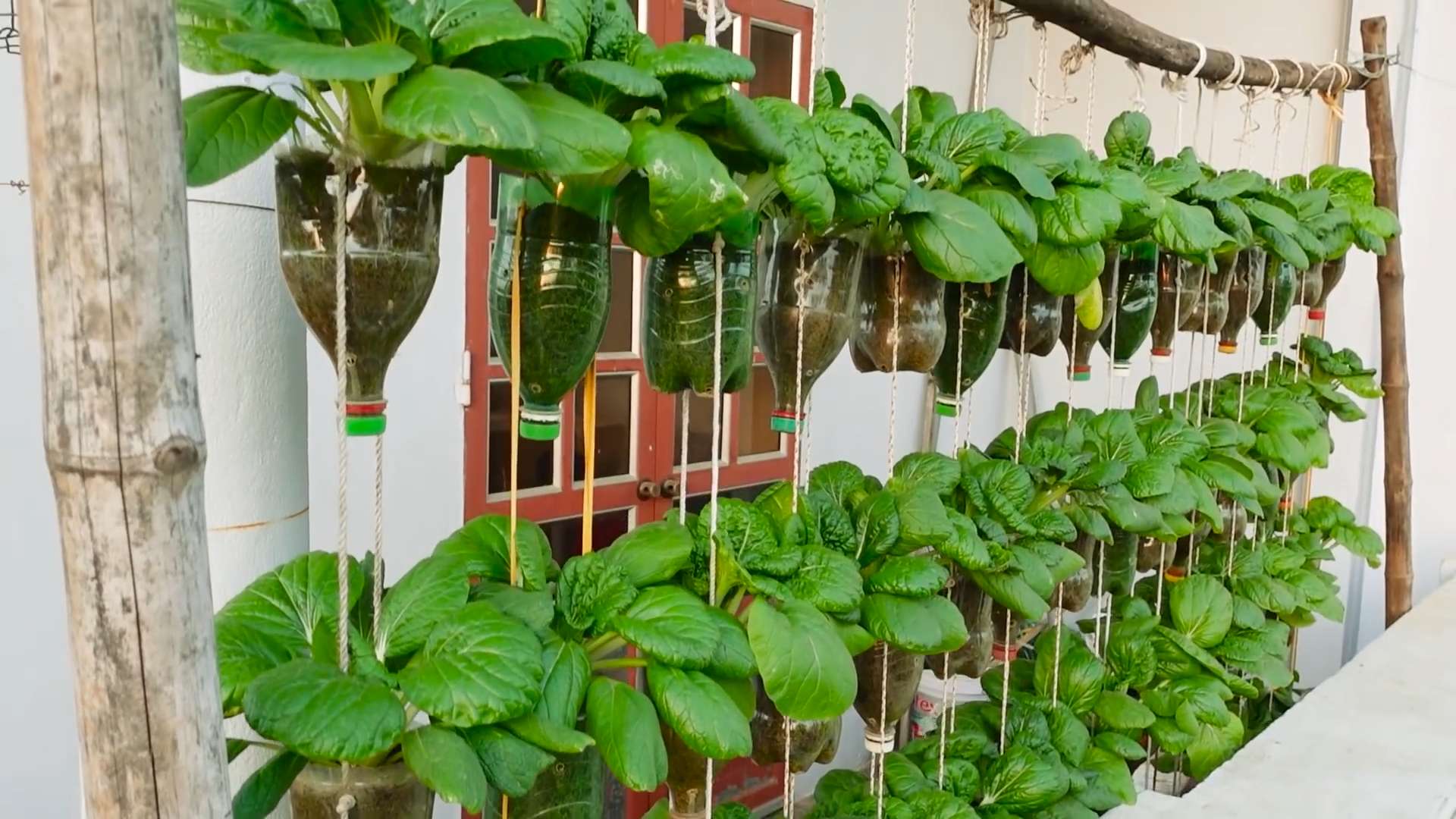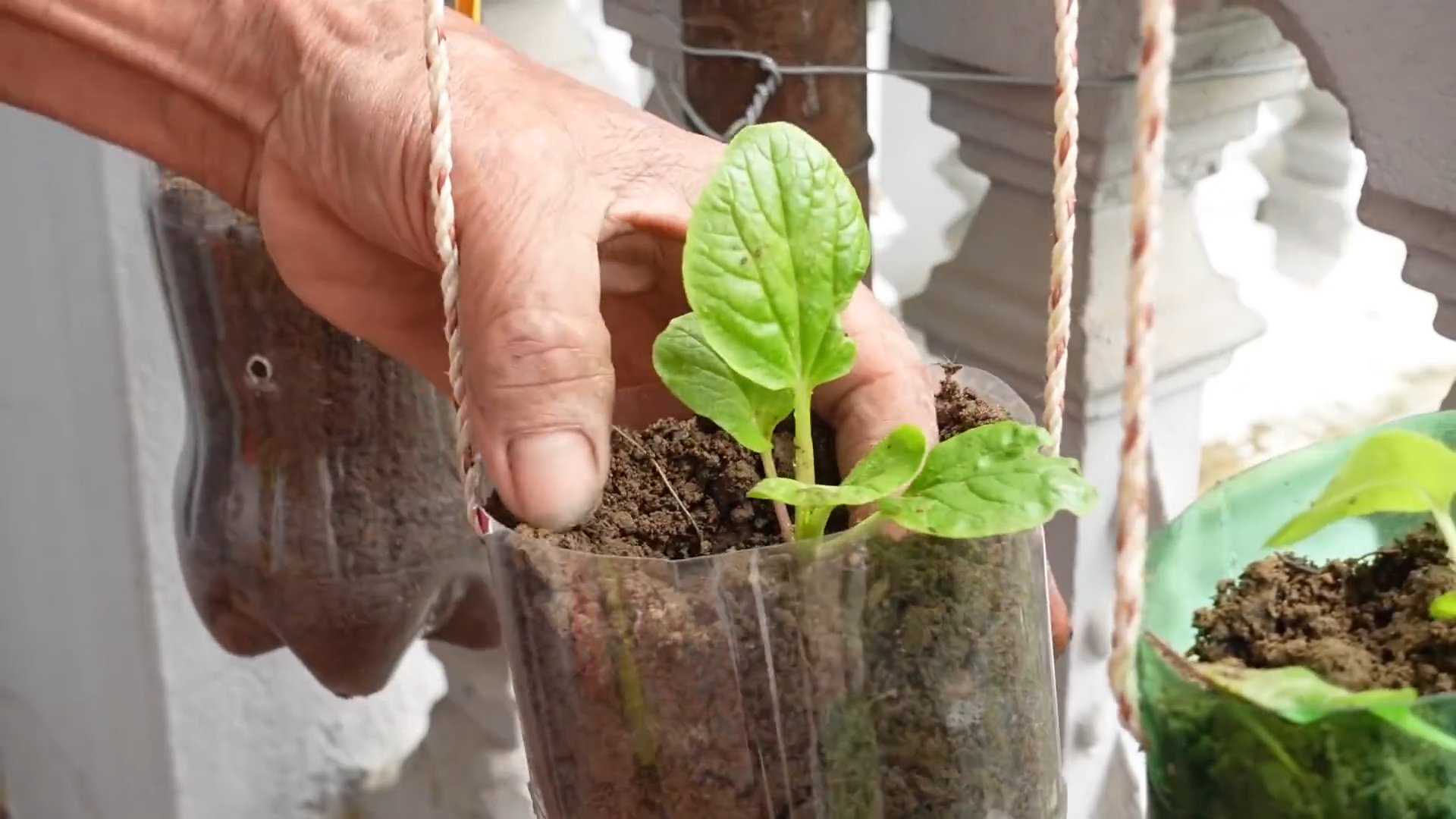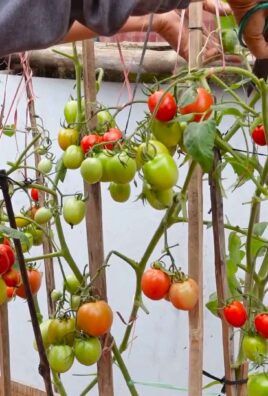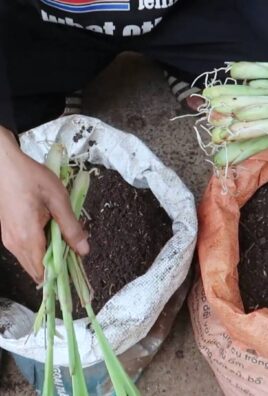Grow Bok Choy Backyard: Imagine stepping outside your back door and harvesting fresh, crisp bok choy for tonight’s stir-fry. Sounds dreamy, right? Well, it doesn’t have to be just a dream! This DIY guide is packed with simple, effective tricks to help you cultivate a thriving bok choy patch, even if you’re a complete beginner.
Bok choy, also known as pak choi, has been a staple in Asian cuisine for centuries, with its origins tracing back to China. It’s not just delicious; it’s also incredibly nutritious, boasting vitamins A, C, and K, along with essential minerals. But beyond its health benefits, growing your own bok choy connects you to a rich culinary heritage and offers a rewarding experience.
Why should you learn these DIY tricks? Because store-bought bok choy can be expensive and often lacks the freshness and flavor of homegrown varieties. Plus, knowing exactly where your food comes from and how it’s grown gives you peace of mind. I’m going to show you how easy it is to grow bok choy backyard, saving you money, reducing your carbon footprint, and adding a vibrant touch to your garden. Let’s get started and transform your backyard into a bok choy haven!

Growing Bok Choy in Your Backyard: A Beginner’s Guide
Okay, so you want to grow bok choy in your backyard? Awesome! It’s easier than you might think, and nothing beats the taste of fresh, homegrown veggies. Bok choy, also known as pak choi, is a type of Chinese cabbage that’s packed with nutrients and super versatile in the kitchen. I’m going to walk you through everything you need to know, from choosing the right spot to harvesting your delicious crop. Let’s get started!
What You’ll Need
Before we dive into the nitty-gritty, let’s gather our supplies. Here’s a list of what you’ll need to successfully grow bok choy:
* Bok Choy Seeds: Choose a variety that suits your climate and preferences. There are several types, including dwarf varieties perfect for smaller spaces.
* Well-Draining Soil: Bok choy loves rich, fertile soil. You can amend your existing soil with compost or purchase a good quality potting mix if you’re growing in containers.
* Compost or Aged Manure: This will provide essential nutrients for healthy growth.
* Gardening Gloves: Protect your hands!
* Hand Trowel or Garden Fork: For preparing the soil and transplanting seedlings.
* Watering Can or Hose: For regular watering.
* Fertilizer (Optional): A balanced fertilizer can give your bok choy a boost, but it’s not always necessary.
* Pest Control (Optional): Insect netting or organic pest control solutions to protect against pests like aphids and cabbage worms.
* Measuring Tape or Ruler: To ensure proper spacing between plants.
Choosing the Right Location
Location, location, location! Just like real estate, the right spot is crucial for growing healthy bok choy. Here’s what to consider:
* Sunlight: Bok choy prefers partial shade, especially in warmer climates. Aim for at least 4-6 hours of sunlight per day. In cooler climates, you can get away with more direct sun.
* Soil: As mentioned earlier, well-draining soil is essential. Bok choy doesn’t like to sit in soggy soil.
* Protection from Wind: Strong winds can damage the delicate leaves of bok choy. Choose a location that’s sheltered from strong gusts.
* Accessibility: Make sure the location is easily accessible for watering, weeding, and harvesting.
Getting Started: Planting Your Bok Choy
There are two main ways to start your bok choy: directly sowing seeds in the ground or starting seeds indoors and transplanting them later. I personally prefer starting seeds indoors because it gives me a head start, especially if I’m dealing with a shorter growing season.
Starting Seeds Indoors (Optional but Recommended)
1. Choose Your Seed Starting Trays or Pots: You can use seed starting trays, small pots, or even recycled containers like yogurt cups. Just make sure they have drainage holes.
2. Fill with Seed Starting Mix: Use a seed starting mix, which is lighter and more sterile than regular potting soil. This helps prevent damping-off, a fungal disease that can kill seedlings.
3. Sow the Seeds: Plant 2-3 seeds per cell or pot, about ¼ inch deep.
4. Water Gently: Water the soil gently to moisten it, but don’t overwater.
5. Provide Light: Place the trays or pots under grow lights or in a sunny window. If using a window, rotate the trays regularly to prevent the seedlings from leaning towards the light.
6. Keep the Soil Moist: Check the soil daily and water as needed to keep it consistently moist.
7. Thin the Seedlings: Once the seedlings have a few true leaves (the second set of leaves), thin them to one seedling per cell or pot. Choose the strongest, healthiest-looking seedling.
Direct Sowing Seeds Outdoors
1. Prepare the Soil: Clear the area of weeds and debris. Loosen the soil with a garden fork or trowel and amend it with compost or aged manure.
2. Create Rows or Beds: Rake the soil to create smooth rows or beds.
3. Sow the Seeds: Plant the seeds about ½ inch deep and 1-2 inches apart in rows.
4. Water Gently: Water the soil gently to moisten it.
5. Thin the Seedlings: Once the seedlings emerge and have a few true leaves, thin them to 6-8 inches apart. This will give them enough space to grow.
Transplanting Seedlings (If Starting Indoors)
Once your seedlings have developed a few true leaves and the weather has warmed up (usually a couple of weeks after the last frost), it’s time to transplant them outdoors.
1. Harden Off the Seedlings: Before transplanting, you need to “harden off” the seedlings. This means gradually exposing them to outdoor conditions to acclimate them. Start by placing them outside in a sheltered location for an hour or two each day, gradually increasing the amount of time they spend outdoors over the course of a week.
2. Prepare the Planting Area: Choose a location that meets the sunlight and soil requirements mentioned earlier. Dig holes that are slightly larger than the root balls of the seedlings. Space the holes 6-8 inches apart.
3. Gently Remove the Seedlings: Carefully remove the seedlings from their trays or pots, being careful not to damage the roots.
4. Plant the Seedlings: Place the seedlings in the holes and gently backfill with soil.
5. Water Thoroughly: Water the seedlings thoroughly after planting.
Caring for Your Bok Choy
Now that your bok choy is planted, it’s time to provide it with the care it needs to thrive.
* Watering: Bok choy needs consistent moisture, especially during hot weather. Water deeply whenever the top inch of soil feels dry. Avoid overwatering, which can lead to root rot.
* Weeding: Keep the area around your bok choy free of weeds. Weeds compete with your plants for nutrients and water.
* Fertilizing (Optional): If your soil is poor, you can fertilize your bok choy with a balanced fertilizer every few weeks. Follow the instructions on the fertilizer package.
* Pest Control: Bok choy is susceptible to pests like aphids, cabbage worms, and flea beetles. Inspect your plants regularly for signs of infestation. You can use insect netting to protect your plants or apply organic pest control solutions as needed.
* Mulching: Applying a layer of mulch around your bok choy can help retain moisture, suppress weeds, and regulate soil temperature.
Harvesting Your Bok Choy
The best part! You can start harvesting your bok choy when the heads are about 6-8 inches tall. This usually takes about 45-50 days from planting.
* Harvesting Individual Leaves: You can harvest individual leaves as needed, starting with the outer leaves. This will allow the plant to continue producing new leaves.
* Harvesting the Entire Head: To harvest the entire head, cut it off at the base with a sharp knife.
* Succession Planting: To ensure a continuous harvest, plant new seeds every few weeks.
Troubleshooting
Even with the best care, you might encounter some problems while growing bok choy. Here are a few common issues and how to address them:
* Aphids: These tiny insects can suck the sap from your plants, causing them to become weak and stunted. You can control aphids by spraying them with a strong stream of water, applying insecticidal soap, or introducing beneficial insects like ladybugs.
* Cabbage Worms: These caterpillars can devour the leaves of your bok choy. You can control cabbage worms by handpicking them off the plants, applying Bacillus thuringiensis (Bt), or using insect netting.
* Flea Beetles: These tiny beetles can create small holes in the leaves of your bok choy. You can control flea beetles by using insect netting, applying diatomaceous earth, or spraying with neem oil.
* Bolting: Bolting is when the plant prematurely flowers and goes to seed. This can happen when the weather gets too hot. To prevent bolting, plant your bok choy in partial shade and water it regularly.
* Root Rot: Root rot is a fungal disease that can occur when the soil is too wet. To prevent root rot, make sure your soil is well-draining and avoid overwatering.
Enjoying Your Harvest
Now that you’ve harvested your bok choy, it’s time to enjoy the fruits (or rather, vegetables) of your labor! Bok choy is incredibly versatile and can be used in a variety of dishes. Here are a few ideas:
* Stir-fries: Bok choy is a classic ingredient in stir-fries. Simply

Conclusion
So, there you have it! Growing your own bok choy in your backyard is not only achievable, but it’s also incredibly rewarding. From the vibrant green leaves gracing your garden to the fresh, crisp flavor enhancing your meals, the benefits are undeniable. This DIY approach empowers you to control the quality of your produce, ensuring it’s free from unwanted pesticides and brimming with nutrients.
Think about the possibilities! You could experiment with different varieties of bok choy, from the petite Shanghai bok choy to the larger, more robust types. Imagine stir-fries bursting with freshly harvested baby bok choy, or hearty soups enriched with the mature, leafy greens. The culinary applications are endless, limited only by your imagination.
Beyond the delicious results, growing bok choy is a fantastic way to connect with nature and cultivate a deeper appreciation for the food we eat. It’s a therapeutic activity that can reduce stress and bring a sense of accomplishment. Plus, it’s a sustainable practice that contributes to a healthier planet.
Don’t be intimidated if you’re a beginner gardener. Bok choy is relatively easy to grow, especially when you follow the simple steps outlined earlier. Remember to provide adequate sunlight, well-draining soil, and consistent watering. Keep an eye out for pests and diseases, and take action promptly to prevent any major problems.
Ready to embark on your bok choy growing adventure? We wholeheartedly encourage you to give this DIY trick a try. You’ll be amazed at how easy and fulfilling it is to grow your own fresh, delicious bok choy right in your backyard.
And most importantly, we want to hear about your experience! Share your tips, successes, and challenges in the comments below. Let’s create a community of bok choy enthusiasts, learning and growing together. Your insights could inspire others to take the plunge and discover the joys of homegrown bok choy. Happy gardening!
Frequently Asked Questions (FAQs)
What is the best time of year to plant bok choy?
Bok choy is a cool-season crop, meaning it thrives in temperatures between 55°F and 70°F (13°C and 21°C). The best time to plant bok choy is either in early spring or late summer/early fall. For a spring crop, start seeds indoors 4-6 weeks before the last expected frost, or direct sow outdoors as soon as the soil can be worked. For a fall crop, sow seeds directly into the garden in late summer or early fall, about 6-8 weeks before the first expected frost. Avoid planting during the hottest months of summer, as high temperatures can cause bolting (premature flowering), which makes the leaves bitter.
How much sunlight does bok choy need?
Bok choy needs at least 4-6 hours of sunlight per day to grow well. While it can tolerate some shade, especially during the hottest part of the day, insufficient sunlight can result in leggy growth and reduced yields. Choose a location in your backyard that receives ample sunlight throughout the day. If you live in a particularly hot climate, providing some afternoon shade can help prevent bolting.
What kind of soil is best for growing bok choy?
Bok choy prefers well-draining soil that is rich in organic matter. The ideal soil pH is between 6.0 and 7.5. Before planting, amend the soil with compost or other organic matter to improve drainage, fertility, and water retention. If your soil is heavy clay, consider adding sand or other amendments to improve drainage. A slightly acidic to neutral soil is ideal for optimal growth.
How often should I water bok choy?
Bok choy needs consistent moisture to thrive. Water deeply and regularly, especially during dry periods. Aim to keep the soil consistently moist but not waterlogged. Overwatering can lead to root rot, while underwatering can cause the leaves to wilt and become tough. A good rule of thumb is to water when the top inch of soil feels dry to the touch. Mulching around the plants can help retain moisture and suppress weeds.
What are some common pests and diseases that affect bok choy?
Bok choy can be susceptible to several pests and diseases, including aphids, cabbage worms, flea beetles, and downy mildew. Regularly inspect your plants for signs of infestation or disease. Aphids can be controlled with insecticidal soap or a strong stream of water. Cabbage worms can be handpicked or treated with Bacillus thuringiensis (Bt). Flea beetles can be deterred with row covers or insecticidal soap. Downy mildew can be prevented by ensuring good air circulation and avoiding overhead watering. If downy mildew does occur, remove affected leaves and treat with a fungicide.
How do I harvest bok choy?
Bok choy can be harvested at any stage of growth, depending on your preference. Baby bok choy can be harvested when the leaves are about 4-6 inches long. Mature bok choy can be harvested when the heads are firm and compact. To harvest, simply cut the entire head at the base of the plant with a sharp knife. Alternatively, you can harvest individual leaves as needed, starting with the outer leaves.
Can I grow bok choy in containers?
Yes, bok choy can be successfully grown in containers. Choose a container that is at least 12 inches deep and wide to allow for adequate root growth. Use a well-draining potting mix that is rich in organic matter. Water regularly and fertilize every few weeks with a balanced fertilizer. Place the container in a location that receives at least 4-6 hours of sunlight per day.
How do I prevent bok choy from bolting?
Bolting, or premature flowering, can occur when bok choy is exposed to high temperatures or stress. To prevent bolting, plant bok choy during the cool season, provide adequate sunlight and water, and avoid stressing the plants. If you live in a hot climate, consider providing some afternoon shade. Choose bolt-resistant varieties of bok choy.
What are some ways to use bok choy in cooking?
Bok choy is a versatile vegetable that can be used in a variety of dishes. It can be stir-fried, steamed, boiled, or added to soups and stews. The leaves and stems are both edible and have a mild, slightly sweet flavor. Bok choy pairs well with garlic, ginger, soy sauce, and sesame oil. It’s a popular ingredient in Asian cuisine and can be used in stir-fries, noodle dishes, and dumplings.
Can I save seeds from my bok choy plants?
Yes, you can save seeds from your bok choy plants, but it requires allowing the plants to bolt and produce flowers. Bok choy is a biennial, meaning it typically flowers in its second year. However, if exposed to stress, it may bolt in its first year. Allow the flowers to dry on the plant, then collect the seeds from the dried pods. Store the seeds in a cool, dry place. Keep in mind that bok choy can cross-pollinate with other members of the Brassica family, so the seeds may not be true to type if other Brassicas are growing nearby.





Leave a Comment